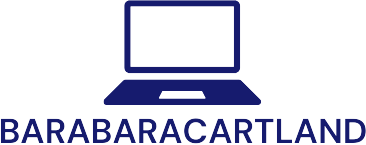Table of Contents
ToggleFor high-income earners, tax season can feel like a game of dodgeball—everyone’s trying to avoid getting hit by the IRS. But fear not! With the right strategies, they can keep more of their hard-earned cash in their pockets instead of handing it over to Uncle Sam.
Navigating the world of tax-saving strategies might seem daunting, but it doesn’t have to be. From maximizing deductions to exploring tax-advantaged accounts, there are plenty of ways to turn that tax bill into a mere speed bump on the road to financial freedom. So buckle up and get ready to discover how to outsmart the taxman while keeping a smile on your face. After all, who said saving money couldn’t be fun?
Overview of Tax Saving Strategies for High-Income Earners
High-income earners can employ various strategies to minimize tax liabilities. Deductions serve as powerful tools, enabling individuals to lower their taxable income. Charitable contributions, for instance, allow taxpayers to support causes while reducing their tax burden, with limits typically set at 60% of adjusted gross income (AGI).
Another effective approach involves tax-advantaged accounts. Contributions to retirement plans like 401(k)s or IRAs not only prepare for future needs but also reduce taxable income. High-income earners often benefit from health savings accounts (HSAs), as they offer triple tax advantages: pre-tax contributions, tax-free growth, and tax-free withdrawals for qualified medical expenses.
Utilizing tax credits can reduce taxes owed on a dollar-for-dollar basis. The child tax credit and other education-related credits provide significant savings opportunities. Investing in municipal bonds also presents a strategy since the interest earned typically remains tax-exempt at the federal level.
In addition, tax-loss harvesting allows individuals to offset capital gains with investment losses, helping to lower overall tax liability. Proper entity structuring may also play a crucial role; high earners might benefit from establishing limited liability companies (LLCs) or S-corporations.
Lastly, consulting with a tax professional ensures exploration of all available options. Professional insights can identify personalized strategies suited to individual financial situations, maximizing tax-saving potential effectively.
Common Challenges Faced by High-Income Earners

High-income earners encounter unique tax challenges that require careful navigation. Understanding these obstacles is essential for effective tax planning.
Understanding Tax Brackets
Tax brackets can create confusion for high-income earners. Income tax rates increase incrementally, meaning that not all income is taxed at the same rate. Earnings above certain thresholds incur higher tax rates, which can lead to significant tax liability. Individuals within higher brackets pay percentages that can exceed 37%. Consequently, strategic income management becomes vital to minimize exposure to these elevated rates.
Managing Taxable Income
Managing taxable income is also critical for high earners. Gross income consists of various sources including wages, interest, and investment gains. Utilizing tax-deductible expenses effectively reduces taxable income, allowing individuals to retain more earnings. High-income earners should prioritize maximizing deductions for items such as mortgage interest and charitable contributions. Additionally, shifting income to lower tax years can alleviate immediate tax burdens. Analyzing all sources of income thoroughly aids in developing a solid tax-saving strategy.
Effective Tax Saving Strategies
High-income earners can adopt various strategies to effectively reduce their tax liabilities. Exploring options like tax-advantaged accounts enhances the potential for savings.
Utilizing Tax-Advantaged Accounts
Tax-advantaged accounts play a crucial role in minimizing taxable income. Contributions to 401(k)s and IRAs can significantly lower tax bills. Health savings accounts (HSAs) offer triple tax benefits by providing tax deductions on contributions, tax-free growth, and tax-free withdrawals for qualified medical expenses. Each type of account serves a specific purpose, with retirement accounts aimed at long-term savings and HSAs intended for medical costs. Understanding the contribution limits also helps maximize advantages.
Maximizing Deductions and Credits
Many high-income earners can benefit from an array of tax deductions and credits available to them. Charitable contributions reduce taxable income while supporting causes individuals care about. Home mortgage interest remains another significant deduction that can lower overall tax burden. Various tax credits, such as the child tax credit or education-related credits, directly reduce tax owed, providing immediate financial relief. Itemizing deductions often yields greater benefits compared to taking the standard deduction.
Considering Tax-Loss Harvesting
Tax-loss harvesting presents an effective way to offset capital gains. This strategy involves selling underperforming investments to realize losses that can counterbalance gains from more profitable ones. He or she can reinvest the proceeds in similar assets, maintaining portfolio balance while minimizing tax liabilities. Recognizing the right timing for harvesting losses ensures optimal benefits. Understanding the concept allows for better management of taxable income and can lead to substantial savings.
Advanced Tax Planning Techniques
Advanced tax planning techniques assist high-income earners in optimizing their tax situations through strategic decision-making. Understanding these methods can lead to substantial savings.
Charitable Contributions
Charitable contributions serve as a powerful tool for reducing taxable income. Making donations to eligible organizations results in deductions that lower overall tax liability. Many taxpayers often overlook this benefit, which is frequently applicable for cash contributions and assets like stocks. Contributions can provide not just financial relief, but also a sense of fulfillment. Taxpayers should maintain proper documentation to substantiate these deductions for their tax returns.
Income Shifting Strategies
Income shifting strategies aim to redistribute income among family members or entities to reduce overall tax burdens. High-income earners can employ techniques like gifting assets to family members in lower tax brackets. Establishing trusts can also facilitate income distribution while providing control over assets. They often yield lower tax rates, maximizing overall savings. Business owners might consider hiring family members, thereby shifting income and utilizing available deductions. Creating legal structures reflects smart financial planning, which pays off in potential savings.
High-income earners have a unique opportunity to leverage various tax-saving strategies that can significantly enhance their financial well-being. By implementing the right techniques and maintaining a proactive approach to tax planning, they can effectively minimize their tax liabilities.
Utilizing tax-advantaged accounts and maximizing deductions not only helps retain more income but also paves the way for long-term financial freedom. Consulting with a tax professional can provide tailored strategies that align with individual financial goals.
Embracing these strategies can transform tax season from a stressful obligation into a rewarding opportunity for growth and savings.




